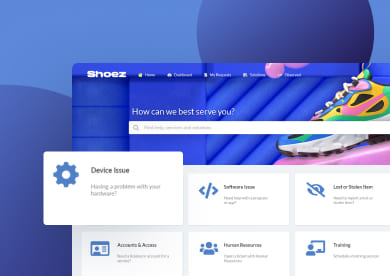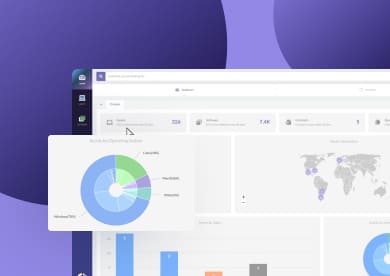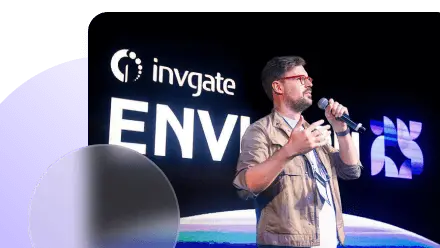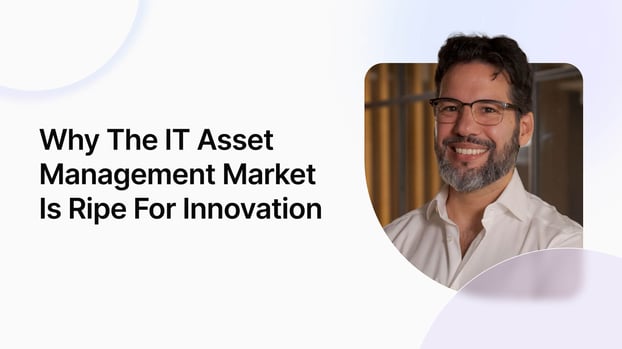If you’ve spent any time in the world of IT Service Management (ITSM), you know exactly who the dominant players are. The landscape is clearly defined, the standards are established, and the market is mature. But when it comes to the IT Asset Management (ITAM) market, it’s a different story entirely.
There’s no "ServiceNow of Asset Management." No single platform that defines the space, sets the rules, or leads the way.
At first glance, this might seem like a sign of weakness – a market still trying to find its footing, leading to uncertainty and messiness. But in reality, this fragmentation is exactly what makes Asset Management one of the most interesting and innovation-ready areas in IT today.
That openness is also drawing attention: according to SNS Insider, the IT Asset Management software market was valued at USD 1.7 billion in 2023 and is projected to grow to nearly USD 2.9 billion by 2032.
This isn’t some sleepy IT backwater – it’s a maturing space with growing urgency and budget behind it. What it lacks in standardization, it makes up for in opportunity.
Why Asset Management resists consolidation
Asset Management doesn’t follow a universal blueprint. The core needs vary widely from one organization to another – and even within the same company, ownership is often unclear.
In some cases, it falls under Infrastructure. In others, it’s handled by IT, Finance, Security, or even the Procurement team. Each brings its own priorities: governance, lifecycle tracking, cost control, compliance, provisioning.
As a result, what “good” looks like in Asset Management depends entirely on your context – industry, regulation, risk profile, and internal culture.
And because no single platform has become indispensable, the switching cost between tools remains low. Companies are free to experiment. They can try one solution, evaluate it, and switch without massive disruptions to operations.
That freedom is rare and powerful. It’s a kind of freedom we’ve tried to protect in our own design philosophy, giving teams the power to shape the system around their needs, not the other way around.
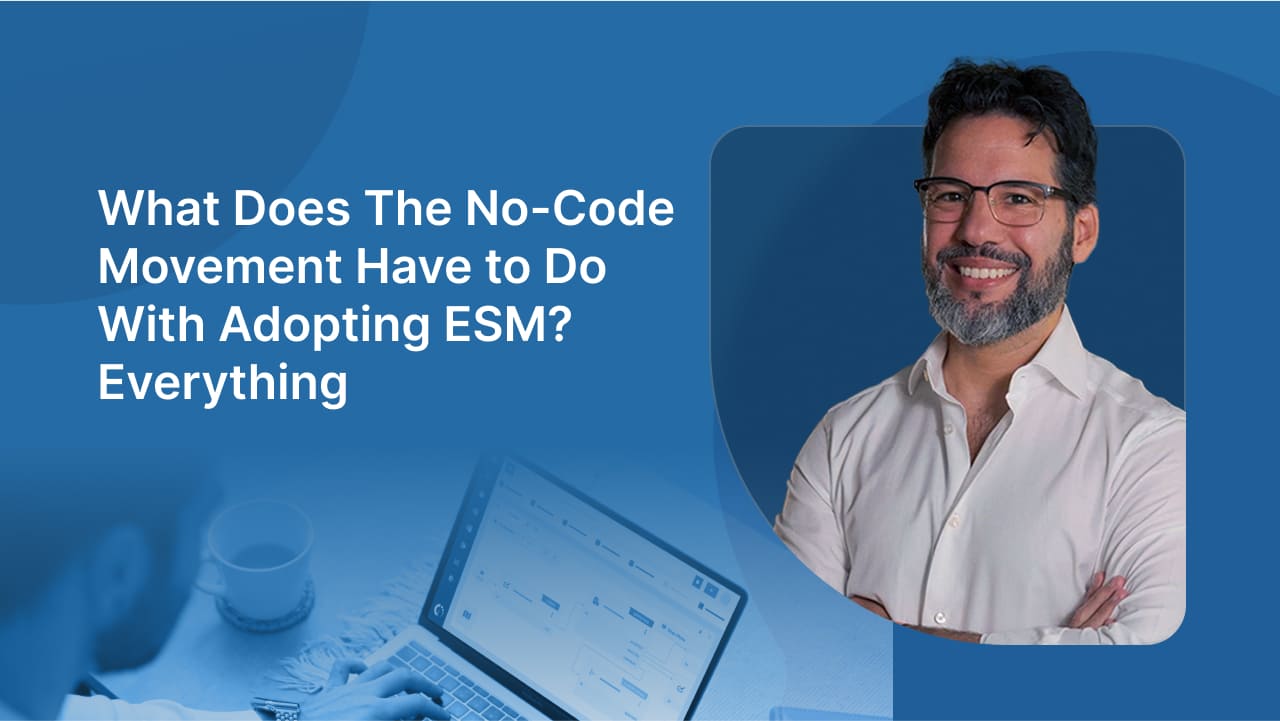
The strategic advantage of a fragmented ITAM market
If you’ve spent time in IT or operations, you’ve seen the downside of standardization: tools that come with a thick manual, a rigid structure, and an unspoken message – “your process should look like this.” That’s great if your organization happens to match that template. But more often than not, it doesn’t.
And that’s the opportunity with ITAM right now. The market is fragmented, yes, but that also means it’s wide open. There’s no dominant “way things must be done,” no system everyone’s forced to bend to.
We’re in a Greenfield moment where the ground is still soft, the lines haven’t been drawn in ink, and companies actually have room to design the thing they need instead of cramming themselves into someone else’s mold.
That’s exactly the kind of moment InvGate was built for; not to force conformity, but to support creativity in how teams manage their assets.
Take North America for example: it held the largest share of the IT Asset Management software market in 2023, at about 45.4%.
But what works in the U.S. or Canada doesn’t necessarily translate to Latin America, Europe, or APAC. Different regions face different regulatory requirements, organizational structures, and resource constraints. The lack of a global standard is a reflection of just how diverse the needs really are.
I’ve seen companies rethink ownership entirely. Instead of sticking Asset Management in a single department, they treat it as shared infrastructure – something that Finance, Security, IT, and even HR can access and rely on. That shift doesn’t require some grand re-org, but a tool that doesn’t assume only one type of user.
The smartest teams I’ve seen don’t wait for permission to customize. They tweak how assets are categorized, build their own relationships between data types, or repurpose modules to track things like factory floor machinery or cold storage units.
And because they’re not boxed in by a one-size-fits-all approach, they can move faster. They can iterate. They can fail quietly and improve quickly, without needing a six-month change request process.
Even small changes can have ripple effects. One company I spoke to started out using ITAM for laptops and monitors – pretty standard stuff. But once they saw how easily they could layer in custom asset types, they extended it to track employee-assigned tools, onboarding kits, even parking passes.
Why? Because once they had a system that worked for them, the boundaries of “what counts as an asset” became a little blurrier. We’ve seen that same pattern again and again: once users realize the platform doesn’t get in their way, they start solving problems we never anticipated.
That’s the strategic edge here. In a rigid system, you're optimizing inside someone else’s rules. In a flexible one, you're writing your own, and that makes all the difference.
When you’re not locked into a fixed framework, you’re free to build something that actually fits. Something that reflects your real-world constraints, your actual people, your evolving needs. That’s where the good stuff happens. That’s where innovation starts to feel natural.

Excel is not just a competitor – it’s a maturity marker
Here’s a truth I’ve learned over years of working with clients in this space: if you make ITAM software, your biggest competitor isn’t another tool. It’s Excel.
But the real issue isn’t Excel itself – it’s what Excel represents. Its continued use in Asset Management isn’t a sign that it works well. It’s a sign that many organizations are still stuck in a reactive, ad hoc approach to asset tracking. They’re doing just enough to get by, but not enough to get ahead.
This is less about usability and more about maturity.
Relying on spreadsheets to manage complex environments is a comfort zone – a familiar, low-friction path that delays the hard work of operational transformation. It’s avoiding the shift from manual control to structured, intelligence-driven governance that’s tightly integrated with broader Service Management workflows.
That’s the opportunity. It’s why we’ve focused so much on making InvGate Asset Management not just easier than Excel, but fundamentally more helpful, because that’s what gives companies the confidence to evolve.
Challenging Excel comes with the obvious advantages of a better interface and slicker features; but more than that, it helps organizations grow into a more strategic posture. One where assets aren’t just tracked, but actively governed. Where data isn’t buried in cells, but surfaced in real time to inform decisions.
And the moment a company is ready to cross that line – to move from “just keeping track” to “actually managing” – that’s when a true ITAM solution becomes invaluable.
What companies actually want from Asset Management tools
When people talk about software, especially in enterprise IT, there's often a kind of obsession with features – long lists, endless specs, competitive grids.
But the truth is, success in Asset Management doesn’t come from who has the longest list of buttons and toggles. It comes from how well the tool actually fits into the rhythm of a company’s daily work.
The best tools don’t try to impress you with complexity, but they make you feel like you know how to use them five minutes after logging in. That’s been core to our design philosophy: a clean interface that doesn’t intimidate people, even if they’re brand new to ITAM.
If you’re rolling out Asset Management across multiple departments, you need more than power under the hood. You need something that feels approachable, something that signals from the very first interaction: “This won’t slow you down.”
That sense of ease is especially important when you're dealing with multiple stakeholders who speak very different operational languages. Security wants visibility and control. Finance wants depreciation data, contract clarity, license usage. Procurement wants to know what’s coming up for renewal. If the platform can’t support all of them without creating silos or adding friction, it’s just creating new problems in a different place.
That’s where things like natural language querying become more than just a nice-to-have. It means someone in compliance can ask the system: “Show me all endpoints in Region A that don’t meet encryption standards” and actually get an answer without needing to memorize a dozen nested filters.
It’s the difference between “learning to use the software” and just using it. We’ve invested in features like these because they help entire teams, not just asset managers, feel empowered by the data.
And then there’s adaptability. One of the most underrated needs in this space is the ability to track assets that don’t show up in your traditional ITAM spreadsheet.
Companies want to inventory hospital beds, factory robotics, point-of-sale terminals, even office furniture, depending on what industry they’re in. They’re not trying to force these items into the mold of “IT asset” – they just need a system that won’t blink when they ask it to handle something outside the default use case.
It’s no surprise, then, that Software Asset Management – one key area within the broader ITAM discipline – is also booming. Grand View Research estimates it was a USD 3.14 billion market in 2023, with projected growth of over 16% annually through 2030.
That kind of growth reflects how companies are looking for smarter, more efficient ways to track, manage, and optimize the full spectrum of their assets… not just what’s physically plugged into a wall.
So when we talk about what companies actually want, it's not just about functionality, it’s about autonomy. They want tools that help them build the version of Asset Management that fits their business, their structure, their pace.
And that’s the real shift: away from forcing everyone into a rigid, one-size-fits-all model… and toward platforms that offer strong foundations but let you shape the details. The best tools adapt to the real-life structure of your business, with enough flexibility to fit and enough guidance to help you move forward fast.
Because when the system starts to feel like a natural extension of how people already work (instead of something they have to constantly fight) that’s when real value shows up.
Don’t wait for a standard; build what works for you
The beauty of this moment is that there’s no "right" way to do Asset Management – and that’s part of what makes it worth doing now. This is a rare opportunity, and a rare level of freedom, in IT.
Instead of forcing your organization to adapt to a one-size-fits-all model, you can define a system that fits your real needs: cross-functional, adaptable, and easy to evolve.
We believe ITAM should be built around how you actually work, not how a vendor thinks you should. That’s why we’ve focused so much on designing to support diverse use cases, not constrain them. Whether you're tracking laptops, forklifts, or onboarding kits, the system adapts, not the other way around.
So no, there’s no “standard” in Asset Management yet. Maybe one will pop up eventually. But smart companies aren’t waiting around for that. They’re already building systems that reflect their priorities, their structure, and their pace. And we’re building right alongside them.
